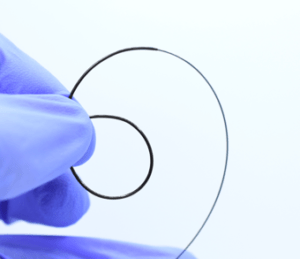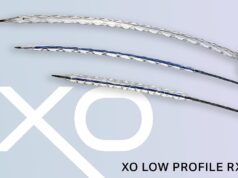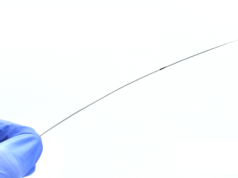
Transit Scientific recently received CE mark approval in the European Union for its non-tapered metal alloy XO Cross microcatheter platform, a press release reports.
Microcatheters are commonly used to provide guidewire support, facilitate guidewire exchanges, access distal anatomy, cross lesions, deliver therapeutic embolics, and inject contrast media, during complex endovascular procedures.
“XO Cross incorporates a unique non-tapered design that gives it guidewire-like 1:1 torque response,” said George Adams (UNC REX Healthcare, Raleigh, USA). “The low-profile 2F XO Cross enabled easy access and wire support for a pedal retrograde approach through a 2.9F micro puncture sheath rather than needing a larger 4F introducer.”
The XO Cross platform is designed to deliver new levels of pushability, trackability, and torque response for improved access in challenging peripheral lesions. The non-tapered, metal-alloy and polymer construction delivers high fatigue-resistance for tackling tough calcium and plaque found in late-stage peripheral arterial disease (PAD) and critical limb ischaemia (CLI) patients.
“We encounter increasingly complex, difficult lesions that require new sophisticated microcath technologies and approaches,” said Eric Dippel (Vascular Institute of the Midwest, Davenport, USA). “XO Cross helps fill that need by enabling better control, response, and tip shapeability for improved wire support and crossing.”
Having completed a successful multisite, multiuser limited release in the USA, Transit Scientific will launch the 2Fr XO Cross 14 microcath, 2.6Fr XO Cross 18 microcath, and the 3.8Fr XO Cross 35 support catheter in Europe over the coming months. XO Cross is a comprehensive support catheter platform available in 90cm, 135cm, 150cm, and 175cm working lengths for use with standard 0.014″, 0.018″, and 0.035″ guidewires. The longer 175cm versions are designed to support radial artery to peripheral access or pedal access from a contralateral femoral approach.













